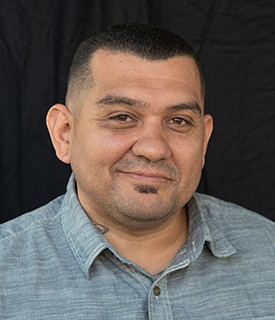According to the Evidence Synthesis Program (ESP), post-traumatic stress disorder (PTSD) is the third most common psychiatric diagnosis among veterans treated by the Veterans Health Administration (VHA), with more than 7 million adults in the United States struggling from the disorder. PTSD occurs subsequently with traumatic events such as natural disasters, terrorist situations, severe accidents, abuse, traumatic childhoods, critical health concerns, or physical or sexual assault.
The Department of Defense and healthcare scientists spent years searching and pursuing a series of solutions that would be safe, successful, and fast-acting in treating PTSD. Around 2010, military medical facilities started offering clients with PTSD a procedure customarily used to treat and relieve pain. The procedure was known as Stellate Ganglion Block (SGB).
What Is a Stellate Ganglion Block?
I bet you’re asking yourself what a stellate ganglion block is and how it can help trauma victims. The stellate ganglion is a cluster of nerve cells located in the spine. An SGB is an outpatient procedure involving the injection of a local anesthetic surrounding the stellate ganglion to obstruct sympathetic nerve impulses to the head, neck, and face. In other words, healing PTSD is now possible by administering a shot.
How a Stellate Ganglion Block Is Administered
The client is typically sedated during this procedure. A fine needle is positioned near the stellate ganglion using x-ray guidance, and an anesthetic is injected. The cluster of nerve cells that make up the stellate ganglion help control the body’s “fight or flight” reaction. The fight or flight response is a common reaction to shield an individual from potential danger; the nerve bodies transport fight or flight messages to the spinal cord and brain.
Individuals who struggle with PTSD can experience extreme and debilitating symptoms, including anxiety, depression, insomnia, avoidance of situations similar to the trauma, lack of emotions, and disturbing flashbacks. Almost everyone will experience a variety of responses after a traumatic event, but most people experience improvement in primary symptoms without treatment or medication. However, if symptoms do not decrease, an SGB could benefit the individual.
Benefits of a Stellate Ganglion Block
- Improves PTSD symptoms
- Reduces pain
- Provides a biological approach
- Offers fast-acting relief within minutes or a few days after the procedure
- Enhances mood
- Increases compliance to participate because it does not require daily administration
What Else Can a Stellate Ganglion Block Treat?
Along with improving and reducing PTSD symptoms, an SGB can also be administered to:
- Detect the cause of pain in the face, head, arms, and chest
- Manage pain in the head, neck, chest, or arms that result from nerve injuries, the effects of shingles, or angina
- Decrease sweating of the face, head, arms, and hands
- Treat sympathetically maintained pain
- Minister complex regional pain syndrome
- Reduce migraines and hot flashes
- Treat the peripheral vertebral disease
How Effective Is a Stellate Ganglion Block?
The effectiveness of a stellate ganglion block varies depending on the individual. Some clients report pain relief directly after the injection, but there is a chance the pain may reoccur hours later as the local anesthetic wears off. In contrast, other clients have increased extended-term relief that endures the local anesthetic period and helps them decrease their medication use and increase their involvement in physical therapy.
How long the relief continues is different for each person. Some clients could go days or weeks without pain or presenting PTSD symptoms. Clients typically need a series of injections to continue the positive results. There are occasions where it will only take two injections, but other times it could require up to ten injections. Fortunately, the comfort tends to last longer with each treatment.
Side Effects and Risks of Complications of a Stellate Ganglion Block
There is a very low risk of complications from an SGB. The client will not feel any numbness in the face, but they will have a droopy eye, redness of the eye, warmth in the face, and may become hoarse. The side effects are temporary and only last a few hours. Some may not detect relief immediately, but most clients report feeling results within minutes or days.
Possible complications could include:
- Vascular puncture
- Neural puncture
- Pneumothorax
- Thyroid injury
- Esophageal or tracheal puncture
- Transient Horner syndrome
- Intravascular injection
- Infections
After the procedure is complete, the client should avoid driving or participating in any energetic activities for 24 hours. The individual should relax and take it slow until the following day when they can resume normal behaviors.
If trauma symptoms continue after an SGB procedure, the client is at an increased risk of stress. It is essential to recognize SGB as a highly effective treatment method that can provide quick results with extended relief from unbearable symptoms.
Stellate Ganglion Block (SGB) is a true breakthrough in PTSD treatment. It is a powerful opportunity for people with PTSD and other co-occurring conditions to find relief from debilitating symptoms. If you or a loved one could benefit from SGB, we want to help. Crownview Co-Occurring Institute in Oceanside, CA, offers psychiatric treatment for various levels of mental health disorders. Our individualized approach guarantees that each client receives quality care with successful results. We will support you from crisis to independence by providing a healing environment with a caring team of professionals ready to help you gain control of your life again. At CCI, we offer treatment plans to meet every physical and emotional need for recovery. Let CCI alleviate the trauma in your life with evidence-based treatment services for a successful long-term recovery. Call (760) 477-4754 today to learn about our effective treatment programs.

 Kimberly Gilkey, RADT-1
Kimberly Gilkey, RADT-1 Timothy Wieland
Timothy Wieland David Abram
David Abram Mark Melden, DO/DABPN
Mark Melden, DO/DABPN Jeffrey Klein
Jeffrey Klein Nathan Kuemmerle, MD
Nathan Kuemmerle, MD Laura Hopper, Ph.D.
Laura Hopper, Ph.D. Rebecca McKnight, PsyD
Rebecca McKnight, PsyD Milena Dun, PhD
Milena Dun, PhD Brieana Turner, MA, LMFT
Brieana Turner, MA, LMFT Brittany Perkins, MA, LMFT
Brittany Perkins, MA, LMFT Joanne Talbot-Miller, M.A., LMFT
Joanne Talbot-Miller, M.A., LMFT Alexis Weintraub, PsyD
Alexis Weintraub, PsyD Kathleen McCarrick, MSW, LSW
Kathleen McCarrick, MSW, LSW Christina Lam, N.P.
Christina Lam, N.P. John P. Flores, SUDCC-IV-CS, CADC II
John P. Flores, SUDCC-IV-CS, CADC II David Dalton, Facility Operations Director
David Dalton, Facility Operations Director Amy Thompson
Amy Thompson Kelly Schwarzer
Kelly Schwarzer Jovanna Wiggins
Jovanna Wiggins Alexandria Avalos, MSW, ACSW
Alexandria Avalos, MSW, ACSW Michelle Ertel
Michelle Ertel Emily Skillings
Emily Skillings Amanda Irrgang, Registered Dietitian Nutritionist (RDN)
Amanda Irrgang, Registered Dietitian Nutritionist (RDN) Gianna Melendez
Gianna Melendez Jodie Dahl, CpHT
Jodie Dahl, CpHT Jordan Granata, PsyD
Jordan Granata, PsyD